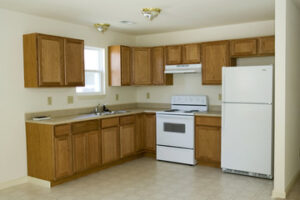Elevate your outdoor living spaces with Arizona Patio Covers that provide style, comfort, and durability. Explore various design options that include customizable features to fit your aesthetic.

A good patio cover doesn’t just protect furniture from the sun – it keeps it dry during rainstorms too. Consider water resistance, UV protection, and ease of maintenance as you select the right patio cover for your home.
Choosing the right patio cover material is vital for both function and style. A good material should be sturdy and durable enough to stand up to the weather conditions in your area, while also blending seamlessly with your home’s architecture and the surrounding landscape.
Wood and metal are popular options that offer a range of looks. Wood, for example, can be stained or painted to suit any design aesthetic. It can also be treated to resist rot and insect damage. Metal, on the other hand, offers a sleek, contemporary look. It’s also lightweight and durable, but it may be more expensive than other materials.
Other materials like vinyl and polycarbonate are inexpensive and easy to maintain. They’re resistant to fading, cracking, and peeling, so they’ll keep their appearance for years. They’re also water-resistant, which is important in areas with heavy rainfall.
Patio covers can be custom-made to match the color and material of your home, creating a cohesive, seamless look. They can also be designed with ventilation in mind, allowing air to circulate while blocking harsh sun and rain.
A solid roof cover protects your furniture from harsh UV rays, helping it last longer and keeping it looking its best. It’s also a great way to reduce your energy costs by keeping your patio cool and comfortable without running the AC.
An open lattice cover allows for more natural light and air circulation while still protecting your furniture from the elements. This type of cover is also a great option for those who want to add ambient lighting or ceiling fans to their patio.
A retractable awning is another great option that gives you the ability to control how much shade you have. They’re available in a variety of colors and designs, and they can be fitted between two posts or over windows. They’re especially beneficial in areas with unpredictable weather, as they can be adjusted to suit different conditions. They’re also more affordable than other types of patio covers. They can be less durable, however, and they’re not as wind-resistant as other covers.
Designing the Space
If you’re planning to add a patio cover, it’s essential to think through how you will use the space. Consider the type of entertainment you’ll host, whether you plan to dine outside or simply lounge with friends. You should also consider any other uses you might have for the outdoor area, such as gardening or a veggie patch. These considerations can help you determine how much space you need and the best structure to fit your needs.
Choosing the right design and materials for your cover will greatly influence its functionality and aesthetic. For example, wood offers a natural feel and blends well with garden spaces and traditional home exteriors. However, it’s also susceptible to rot and requires regular sanding and repainting. On the other hand, metal has a modern and sophisticated appearance and is durable enough to stand up to rain showers.
Lattice covers provide partial shade and create a pleasant, dappled light effect. They are also less expensive than solid covers and are available in a range of styles to suit any home. However, they can limit airflow and might not be suitable for warm Las Vegas days.
Other types of covers include pergolas and umbrellas. These structures offer flexibility and can be moved around your backyard to adjust the amount of shade and sun you have. Pergolas can also be adorned with climbing plants to add height and visual interest. They’re also an excellent choice for shady areas with a view, since they allow light to filter in while preserving privacy.
Enclosed patio covers can transform your outdoor space into a comfortable retreat for relaxing with family and friends. They can be used for dining, lounging, and entertaining, and they provide protection from varying weather conditions. Additionally, they can enhance your home’s curb appeal and increase its resale value if you ever decide to sell. In addition to providing protection from sun and rain, a well-designed patio can help to regulate indoor temperatures and reduce energy costs. This can improve your quality of life and contribute to a more sustainable lifestyle.
Installing the Cover
Patio covers are an investment that can enhance the value of your home, provide a space to relax in and enjoy the view from your backyard, and help reduce energy costs. But they will only work well if they are well-designed and installed properly. A poorly constructed cover will not only be an eyesore, but it may also be unsafe and cause damage to your property. So, before you take on this DIY project, make sure to consider the benefits of hiring a professional.
The type of material you choose will play a big role in the durability, installation and maintenance processes, and aesthetic appeal of your patio cover. You can choose from a variety of durable and beautiful materials, including aluminum, fiberglass, wood, polycarbonate, steel, and more. Aluminum is a popular choice for patio covers, as it offers a wide range of aesthetics and can be custom-colored to complement your outdoor decor. It is also lightweight and can withstand extreme weather conditions.
Fiberglass is another versatile and durable material for patio covers, as it can be custom-molded to fit the exact dimensions of your backyard. It is available in a variety of colors and can be finished with lattice wrap end caps to match your personal style. These end caps come in a variety of shapes, such as scallop for a curved decorative finish, miter for a sharp and angular look, corbel for a traditional touch, and bevel for a smooth and contemporary appearance.
If you want to add an elegant, skylight effect to your patio, go with a poly panel. It creates a translucent “skylight” effect and lets partial sunlight in while keeping rain and harmful UV rays out. It is an excellent option for homeowners who prefer a more refined aesthetic, as it offers a sleek and stylish look that can be easily enhanced with lighting and ceiling fans.
Lattice patio covers are a great option for southern California, as they allow partial sunlight and air to flow in while blocking rain. These are often preferred by hanging plants, as they allow them to soak up natural light and moisture without being completely exposed to the elements. A louvered patio cover, on the other hand, allows you to control the amount of sun and shade you get throughout the day with adjustable slats.
Maintenance
A well-maintained patio cover enhances the aesthetic of a home and increases the durability of the structure. A regular maintenance routine includes cleaning based on the material and performing inspections to identify potential problems. This can include removing loose debris, repairing or replacing worn or broken parts, and addressing pests and insects. Proper care also helps reduce cooling costs.
Cleaning a patio cover regularly prevents dirt and grime buildup, which can damage the surface. A simple cleaning method involves sweeping away loose dust and dirt with a soft brush or cloth, followed by washing the surface with soapy water. This is an important step in preventing damage to the surface and is particularly vital for wooden covers. To avoid damaging the finish, use a non-abrasive detergent. For aluminum and vinyl covers, a mild cleaner or a non-abrasive detergent may be used. The area should be rinsed thoroughly to remove soap residue and to prevent mold growth.
It is crucial to perform regular inspections to identify and address any issues, including cracks or discoloration. These problems can be minor and easily addressed, but if left unchecked, they can escalate and lead to major structural issues. For wood covers, inspecting for signs of rot and insect infestation is especially important.
Other maintenance steps include lubricating moving parts to prevent corrosion, such as hinges and rollers. This can be done with a silicone-based lubricant and may help to improve the lifespan of the hardware. It is also important to trim nearby trees and shrubs to prevent branches or leaves from falling on the structure, especially during storms or windy days. Keeping the surrounding vegetation trimmed also promotes cleanliness, prevents debris buildup, and deters pests.
While some maintenance tasks can be performed by homeowners, it is advisable to hire a professional for routine maintenance and inspections. Professionals can quickly identify and address potential issues, reducing repair costs and saving on energy expenses. They can also ensure that the structure complies with building codes and safety regulations. Professionals can also provide recommendations for repairs and upgrades to enhance the functionality and durability of a patio cover.

